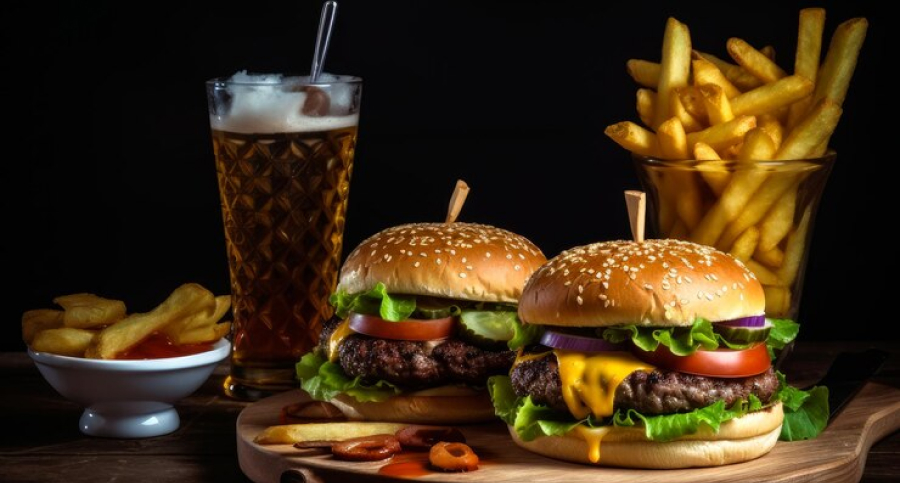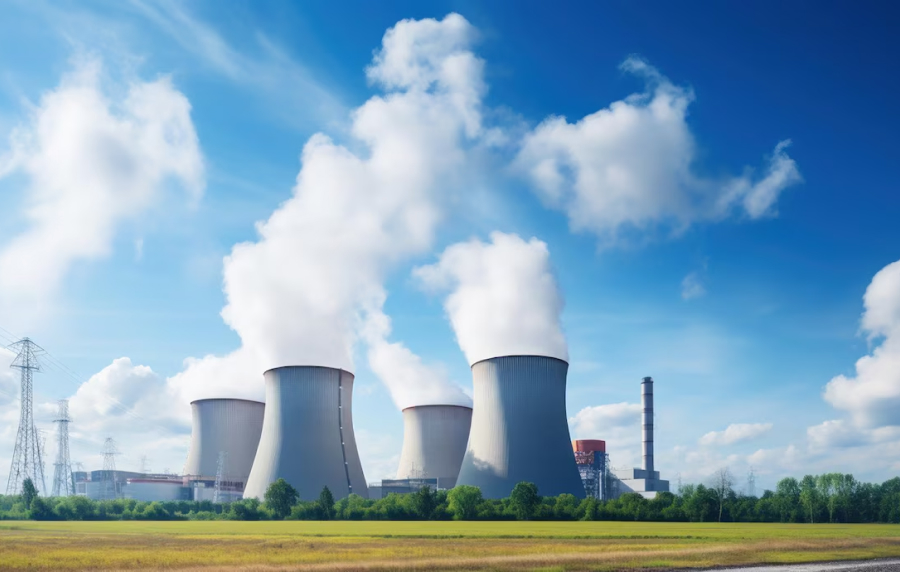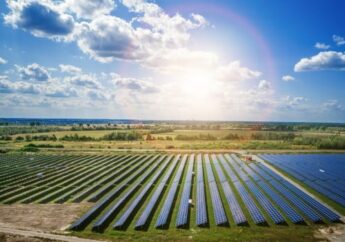Sustainability Practices in Fast Food Chains: Environmental Initiatives and Green Strategies
by Ankita Tripathy Science 22 April 2024

What would be a better treat than a Big Mac from McDonalds? Most Americans think this way. However, it’s high time we stopped thinking this way. Average Americans rarely fathom the fast food environmental impact.
Forbes states that McDonalds, Yum Brands and others are destroying the climate. Ranging from plastic pollution to food loss, the environmental impact of fast food is beyond our perception.
Most Americans find fast food more lucrative than healthier options. Certainly, fast food is easily and quickly available. In addition, it costs less too. This article takes a deep dive at the ways fast food affects TBL. It also studies what fast food chains can do for a change.
Read Also: Boost Your Flower Shop’s Turnover with These 5 Simple Tricks
Energy Use

Cautious energy use in the fast food sector is necessary. All fast food brands should learn to reduce energy use.
Fast Food Industry’s Significant Energy Consumption

Brands like McDonalds consume over 19% of the energy annually generated in the USA. The electronic equipment used in cooking stations consume energy. However, the production of packaging materials and logistics for food delivery equally contributes to the overall fast food environmental impact.
Breakdown of Energy Usage in Fast Food Restaurants

Restaurant kitchens consume 81 kWh electricity with 174,000 Btu natural gas. Typical QSRs use 55% of their electricity for lighting, cooling and refrigeration. The environmental impact of fast food is accrued from every unit of QSR’s value chains. However, the majority is consumed in agricultural production, followed by food processing.
Impact on Carbon Footprint
According to an UN report, fast food supply chain generates 37% of the methane output. Your favourite hamburger needs rearing of livestock and feed farming at large scale. Consequently, soil erosion and mass deforestation occur.
Packaging

Packaging causes most litter in the fast food business. It also leaves traces of microplastic behind.
Contribution of Fast Food Industry to Litter and Packaging Waste
Your favourite fast food chains like McDonalds, Starbucks or Wendy’s cause most litter in the USA. Similarly, customers are also responsible for the fast food environmental impact. We are not ready to pay more for eco-friendly packing.
Challenges Faced by Restaurants in Adopting Sustainable Packaging
Americans are not ready to pay the extra price for the sustainable packaging. Therefore, the brands cannot use it for their mass scale operations. However, it’s high time to change our habit.
Efforts by Some Fast Food Chains to Switch to Eco-friendly Packaging
Fast food effects on the environment are diverse. Certainly, packaging is a potential one, out of those. However, McDonalds pledged that 82.7% of their packaging is reusable. Our favourite KFC fried chicken also comes in paper buckets and boxes. Similarly, brands like Yum Brands are also trying to cut down on plastic, to reduce Stryofoam creation.
Food Waste

Most Americans have a habit of food wastage. You must learn why it is harmful for our environment.
Statistics on Food Waste in the US
Americans waste 40% of produced and processed food annually. Most of the wasted food goes to landfills. The fast food effect on environment should be immediately addressed. Plastic eventually causes marine pollution. None of America’s major fast food brands try actively to reduce food wastage.
Portion Sizes and Leftovers in Fast Food Industry
Most of us demand value for money when ordering fast food. We want big portions of our favourite pizza and burger. After that we throw remaining portions than preserving it. Certainly, most Americans must learn how fast food affects environment.
This approach of ours is responsible for 85% of food wasted in the USA. All of us can change such petty habits. It will reduce the fast food environmental effects.
Percentage of Food Waste Attributed to Fast Food Restaurants
“Move for Hunger” conducted a study recently. It was found that about half a pound of food is wasted for every meal ordered. It includes customers’ leftovers and kitchen leftovers.
McDonalds use beef and pork for most burger patties. These are high carbon intensive elements. They increase the carbon footprint when wasted. After that, the carbon runs into the soil, causing surface runoff.
Water Contamination

Our marine ecosystem is hampered in many ways. Fast food also has a role in it.
Packaging Chemicals and Water Contamination
Packaging materials in fast food is one of the biggest fast food effects on the environment. The packaging contains Per- and polyfluoroalkyl substances or PFAs. PFA can contaminate water sources easily.
Fast food chains can reduce sending plastics wastes with PFAs to landfill. Harmful gas from PFA combustion is another impact of fast food on the environment. The PFAs in microplastics can damage our health also.
Health Risks Associated with Packaging Chemicals
While you order your favourite beef burger in a drive-thru, the wrapping around it leaves microplastic behind. The average consumer behaviour is to heat the packed food directly. Thus, we consume more microplastics.
A Fortune article reports that 10% of the preterm births in the USA have been linked to chemicals found in plastics in 2018. Above all, these chemicals disrupt normal hormonal activities.
Efforts to Reduce Water Contamination in the Fast Food Industry
The American restaurant chains are becoming conscious about the impact of fast food on environment. McDonalds is trying to give good non-beef menu options. On the other hand, Chipotle is trying to catch up with the trend.
The impact of fast food on the environment would be reduced when other brands join in too. However, Starbucks took initiatives to replenish the clean water bodies. More brands should be conscious of fast food effect on the environment.
Emissions

Carbon emission is perhaps our biggest challenge now. The fast food sector can do a lot, to address it.
Impact of Fast Food Industry On Emissions
Most Americans are fascinated by beef. A beef burger might be your go-to meal. Did you know that cow farming aggravates fast food environmental impact? Beef is a potent source of methane. You can realise the impact of fast food on environment, knowing that 34 metric tons of methane is released every year in the USA.
Excess methane is not decomposed. The environment absorbs it. Therefore, big fast food brands like McDonalds, Wendy’s and others are cutting down their beef options on the menu. Such steps can reduce the fast food environmental impact on a large scale.
Plastic Pollution and Its Effects on Marine Life and Human Health
UNESCO reports that litter from fast food is the biggest source of marine plastic pollution. Our oceans still retain around 75 trillion plastic pieces and microplastic. Consequently, all marine beings consume tons of microplastic every day, without knowledge.
It causes suffocation to marine beings. The plastic components interfere in the normal functioning of the gills. Similarly, it is harmful for us also. We eat fish which contain microplastic inside them.
Secondly, refined water also contains microplastic. In addition, it mixes with the fluids packed in plastic containers. As a result, there are tons of microplastics in our drinking water, beers and table salt.
Efforts Towards Reducing Carbon Emissions and Plastic Waste in the Industry
Brands like McDonalds Burger King are shifting to sustainable procurement to reduce carbon emission. McDonalds would reduce beef options soon. However, Burger King uses a lemongrass-based fodder, which can certainly reduce methane generated from burps and recurring farts of cows.
All fast food brands are reducing single use plastic use in food packaging and daily operations. NY became the third state in the USA to ban use of polystyrene containing plastic in food packaging. Certainly, steps like these can reduce the impact of fast food on the environment.
Read Also: Big Data For Small Businesses: How Can Businesses Utilize Big Data?
Conclusion
The sustainability challenges in fast food are excess use of energy, high emission and plastic pollution. Meanwhile, Americans are gradually realising the need for green practices to mitigate fast food environmental impact. Therefore, many restaurants are making conscious moves. They are cutting down on plastic pollution and avoiding water pollution.
However, a strong focus on reducing energy usage can give better results. We must not depend on others to make the first move. Small contributions like reducing food wastage can bring major changes. We should also avoid one-time plastic use for food. Our joined efforts would gradually mitigate the impact of fast food on the environment.
Our brands are becoming more conscious. They are addressing the global pollution issue too. However, all fast food brands must try to achieve net zero emission. They should also stop one-time plastic use completely. Together we can save the planet and make it greener.
For More Business Related Information Click Below!!





































































































